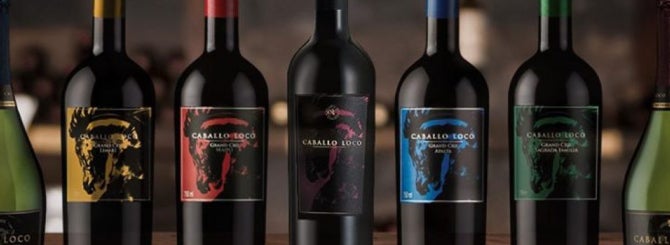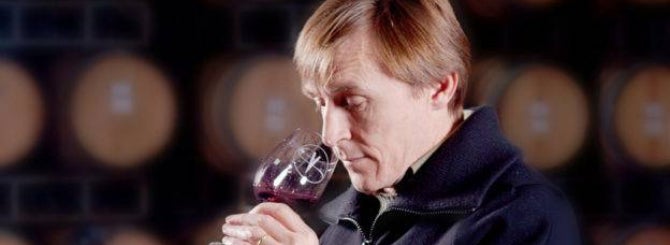
Talk about an accidental birth. No wonder they kept the details quiet for so long.
"They" are Valdivieso, a Chilean company never afraid of taking risks. But Caballo Loco, you could say, had its beginnings in frugality.
| Related stories: |
| The Evolution of Chile's Icon Wine |
| Blending an Alternative to Varietal Wine |
| Carving a Niche for Chile's Fine Wine |
It was all because of the logistics of moving wine from one plant to another: bits and pieces tended to get left behind. Says export director Christian Sotomayor: "We were walking round the winery with our then UK agent, and he saw some barrels and said: 'what’s that?'"
"That" was leftovers, and nobody knew what to do with them. So they started playing around and blending this and that, and what worked best was a blend of half leftovers and half new wine. They bottled half – there was too much to bottle all of it – and it sold out in 16 months.
And so Caballo Loco (Crazy Horse) was born. The half that wasn't bottled formed the base of the second release, succinctly labelled "No. 2". It's a sort of variation on a solera system, and it has continued in the same way; No. 20 has just been released.
As to what's in it? For a long time they wouldn't say. All they would tell you is that there were lots of different grape varieties. And you can see why it was easier to keep schtum: trying to explain the blend, when the next year it would be different, would be a real pain.
They started to give details about 10 years ago, but even now, when they say that No. 7, for example, is Cabernet Sauvignon Cabernet Franc, Merlot and Malbec, they don't give percentages because there are a few other things in there as well – there was probably a bit of Pinot Noir in the first blend, for example, but there was no digital record, says winemaker Brett Jackson. "Everything was just written on bits of paper covered in arrows."
What is remarkable about Caballo Loco, though, is not just how it's blended. It is simply a very beautiful wine. When it was launched, back in 1995, it was rare among Chilean reds for its elegance and freshness. Now those qualities are easier to find in Chile, but Caballo Loco has energy and precision, and it has complexity without appearing to strive for it. It never gives the feeling of trying too hard.
But it has changed over the years.
In No. 9, Carmenère appears. "We were interested in expressing the richness of Chile,” says Jackson.
In the new No. 20 there is Grenache, Tannat and Carignan as well, sourced from north and south, east and west. Jackson knows from harvest onwards which wines will go in: it all depends on the vineyards. They have selected plots around the country earmarked for Caballo Loco, and they make the wines in different ways according to the grapes and what they're looking for. There’s a lot of stainless steel and some concrete for the older wines, and "we're slowly incorporating some foudres", says Jackson; they have to remove the first impact of the oak before they use it for Caballo Loco.
The young wines go into a mix of oak, seldom more than 20 percent new, for two to four years before being used in the blend. "Neutral oak does not exist," says Jackson firmly. They used to use some American oak but have moved away from that more powerful flavor; they're experimenting with clay, but "haven’t been brave enough" to try rauli wood. "I don’t know what’s the best," says Jackson. "It's a pragmatic blend."
Jackson arrived at Valdivieso in 2001, and was told the company needed No. 6.
"It took me so long. My world was vintage, and one vineyard, and getting my head around it… As time has gone by it has become much more about a constant work in progress, with a feeling of where I want the wine to go, and looking at components and how they will come together."
In 2017, Jackson took over Valdivieso’s sparkling wines as well, "and the penny dropped in terms of appreciating acidity. You can add tartaric acid, but you cannot replace the sensation on the palate of natural acidity," he says. So the search for natural acidity has become part of the style of the wine: hence the addition of Carignan, and even Garnacha, if it's grown in the right place. Tannat gives tightness. Jackson has looked at País, "but I don’t want to put in something as a novelty, and I haven't found what I want yet. That doesn't mean it won't happen."

Jackson says some plots are picked early. "I don’t get hung up on green flavors. If there's basil, that's not bad, it's nice. I don't want the taste of jam. Now we add about the same amount of acid to the grapes that come in for richness of flavor. But there are less of those grapes and more of the others", which come in for freshness and acidity.
The winemaking has evolved, as well. Jackson has tried spontaneous ferments but had to write off too many lots. "When it works it's brilliant; when it doesn't it’s not so sexy." So now they start off by innoculating with non-saccharomyces, which ferments the juice to a couple of degrees of alcohol, and then re-innoculate with saccharomyces. "We can create different flavors and textures that way. It's another way of blending interest and complexity."
They make about 3000 12-bottle cases now of Caballo Loco, and it's difficult to increase that because of the way it's made. But what they could do is make a white. So they have, and it's just been released.
It didn't happen overnight. Jackson says the commercial department had been on at him for a white almost since he arrived.
"I couldn’t think of anything at first." Chardonnay? Sauvignon Blanc? A bit obvious, and not a proper pairing for the red. "And then I tried Tondonia, and the penny dropped. It was a different way of working with white. It didn't have to be reductive and fresh. There could be tertiary flavors."
The first base wine was laid down in 2017, and it was Chardonnay from Limarí. It spent the next five years in barrel with some lees stirring.
"I had played with Moscatel from Itata, which is so much a part of Chilean history … It's very phenolic, but if you lay it down, after four or five years the tannins become richness. Some went into clay amphorae for gentle oxidation and less coconut flavor."
There was an element of accident here too, because in amphora it developed flor. "In the early days I would have chucked it out." Not now. He decided he liked the flavor, and the dryness given by the flor offset the sweet fruit of the Chardonnay.
There's also Semillon picked at 10 percent potential alcohol, a bit of Pinot Gris from Casablanca, with acidity, grown originally for base wine for sparkling, and a touch of Pinot Noir picked again at 10 percent potential alcohol and vinified as white.
"It took seven years to put this together," says Jackson. It's a beautiful, complex, orange-peel and citrus wine, rich and dry, alive and tense, textured and layered. The various elements are as perfectly integrated as performers in an elaborate dance."
The same semi-solera system will be used for the white. It's called Caballo Loco Blanco No. 1. Keep it simple.






















